Children's publishing can sometimes be an enigma. Your customers aren't your readers and your readers aren't your customers. A nuance reserved mostly for children's books alone. So how do you successfully publish them? Today, the Alliance of Independent Authors welcomes partner member MCRL and authorpreneur Larry Feign to answer all your questions from print sizing and materials all the way to marketing, mindset and reaching readers. This is your questions answered: illustrated children's books.
For more advice on illustrations in books or children's book publishing, we have a range of articles and books to help.
- The Ultimate Guide to Illustrations in Books
- Successfully Self-Publishing Children’s Books: The ALLi Guide
- The Ultimate Guide to Selling Children’s Books
- Last, check out the Alliance of Independent Authors guidebook about successfully self-publishing children's books.
ALLi welcomes, Partner member MCRL Overseas Group
MCRL Overseas Group is an experienced offset printer of all kinds of books, journals, packaging and more. Get the best of both worlds! Real people in North America managing your project. And an offset printing press overseas for competitive pricing. If you find this article helpful, check out our Client Testimonials and Printing Resources for explanations of common printing terms and examples of printed projects.

Children’s Book Printing 101 Guide
Are you a new independent author looking for advice on the ins and outs of printing your children’s book? Maybe you’re questioning whether you even need to “print” your children’s book.
In this guide, we’ll cover …
- Why a printed children’s book is critical for your audience
- The best printing option for your book; POD or Offset Printing
- The options and add-ons available for your printed book…and how that impacts printing costs
Let’s start off with the question many of you are grappling with…
Do I even need to print my children’s book?
The rule of thumb for years has been to print picture books, board books, and paperback readers. However, a growing number of children enjoy “reading” a book on a digital device AND the tactile experience of turning pages.
When self-publishing a children’s book, consider the audience most likely to read AND purchase your book. Children aren’t typically buying their own books. Parents, grandparents, and other relatives are buying for them. Grandparents love to cuddle up with their grandchildren and read a book together. It’s a bonding experience.
So, which format is best for your children’s book? To maximize revenue potential, you might want to produce in both physical paper AND digital formats.
What’s the difference between Digital and Offset Printing?
Not quite sure of the difference? You’re not alone. It’s the #1 question we get asked.
Digital Printing is also called Print-On-Demand (POD). This printing process transfers data from a computer file to a large-format inkjet or laser printer. It’s a popular choice for short-run book printing. Ingram Spark is a great example of a POD printer.
Digital printing is ideal if you’re publishing a middle grade novel with limited artwork inside, a YA novel, a journal, or a fiction novel. It can also be helpful if you’re just starting out as an author and aren’t anticipating a lot of book sales.
Offset Printing (also known as lithography) uses a specialized, large printing press with a series of printing plates that transfer ink onto paper. Machines feed pre-cut sheets of paper, called parent sheets, through the printing press one sheet at a time.
Offset printing allows for custom features such as spot finishes, foils, glitter, embossing and more. It’s ideal for larger print runs and offset printing lets you to print the highest quality book at the lowest possible price.
Offset printing is great for print runs of 300 to 10,000 units.
Pros of Offset Printing
- Highest quality printing
- Wide range of specialty options
- Low per-unit costs
Cons of Offset Printing:
- High setup costs
- Requires 300+ minimum order quantity
Compare two popular POD Printers (Ingram Spark and Kindle Direct Press) with one Offset Printer (MCRL Overseas Group). View Comparison Chart.
How options and add-ons impact printing costs
Many decisions go into successfully printing a children’s book. Here are five of the most important factors to consider when printing your children’s book.
Trim Size
What SIZE should I print my children’s book?
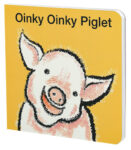 Books like people come in different shapes and sizes. From the smallest pocket-sized books for little hands to beautiful table top collections…the size, cover and weight of your book influences the reading experience. Since the trim size also impacts your book’s marketability and cost, it’s important to know industry best practices.
Books like people come in different shapes and sizes. From the smallest pocket-sized books for little hands to beautiful table top collections…the size, cover and weight of your book influences the reading experience. Since the trim size also impacts your book’s marketability and cost, it’s important to know industry best practices.
Types of Trim Sizes
Trim size in printing or publishing terms refers to the book size. A book is trimmed before it is bound and released into the world. Trim size is usually measured in terms of width x height; measured in inches in the North America and millimeters in the UK.
The standard trim sizes for children’s books are:
- 8 inches x 8 inches (most economical)
- 8.5 inches x 11 inches (most economical)
- 9 inches x 8 inches
The most common board books are:
- 5 inches x 5 inches
- 6 inches x 6 inches
- 7 inches x 7 inches
 For more industry standard book trim sizes (and ways to save money when printing your book, click here).
For more industry standard book trim sizes (and ways to save money when printing your book, click here).
Paper Stock
What type of paper should I choose for my book cover and interior pages?
Your book cover gives a glimpse of your story and intrigues the reader. The quality and design of your cover is a key selling feature. So is the paper!
In an effort to reduce the demand for tree-based paper, many authors and self-publishers are increasingly choosing Bamboo paper stock. Bamboo paper is harvested much faster than trees, absorbs more CO2 and produces less waste than tree pulp.
If you’re not able to print on tree-free paper, Forest Stewardship Council (FSC) Certified Paper stock is highly recommended. FSC certification means materials are harvested and manufactured in a sustainable manner from responsibly managed forests, meeting the highest environmental and social standards.
Paper Opacity & Weight
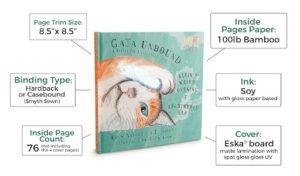 Opacity refers to how much ink will show through on the reverse side of the paper. Opacity is determined by the weight and finish. If a piece of paper is 100% opaque, no ink will show on the reverse side. The thicker the paper, the more opaque it is. The most common paper weights selected for children’s books are
Opacity refers to how much ink will show through on the reverse side of the paper. Opacity is determined by the weight and finish. If a piece of paper is 100% opaque, no ink will show on the reverse side. The thicker the paper, the more opaque it is. The most common paper weights selected for children’s books are
80lb or 100lb gloss or matte paper. Lucy Noland’s Gata Unbound Series is a great example of an eco-friendly printed book.
Board books are typically 40pt or 80pt.
Eska®board is an amazing cardboard material for book covers because it is a 100% recycled solid board that lays flat and stays flat. Eska®board is manufactured in the Netherlands under precise humidity levels to ensure quality and durability.
Eco-Friendly Soy Ink
What is the safest ink for my children’s book?
Phthalate-free and lead-free soy-based ink is the best ink for books, especially when children are your main readers.
Soy many reasons to choose soy-based ink! Soy-based ink is not only more environmentally-friendly than other petroleum ink bases, it also produces more accurate colors. Soy ink is much easier to recycle when compared to oil-based ink because as it goes through the bleaching process soy ink is biodegradable and renewable (unlike lead).
Soy ink is also more cost-effective, requiring less ink than traditional printing inks for the same projects.
Typesetting
Are there typesetting best practices for children’s books?
Typesetting is the process of arranging the physical letters, symbols, and glyphs that make up a book—onto a page so it's print-ready. This process occurs after your story has been edited and before printing. Typesetting plays a key role in your readers’ experience. Depending on the size and type of book you are writing, you will need to pay careful attention to:
- Margins
- Alignment
- Line & Paragraph Spacing
- Page Breaks
- Lines after Subheadings
- Word Stacks …and more
Attention to these details significantly helps the readability and attractiveness of your children’s book for all audiences.
Once your book is properly formatted, your printer will need you to prepare:
- press-ready PDFs with all fonts/images embedded or
- InDesign CS6 packaged files with all supporting links and fonts included.
Depending on the specifications of your book, your printer may be able to provide templates into which you, your illustrator or graphic designer can place your artwork/story. This saves time for everyone!
Evaluating Printing Quotes
How much does it cost to self-publish a children’s book?
The cost to print a Children’s Book depends on a number of factors:
- Size of Your Print Run
- Type of Book and Binding (hard cover, paperback or board book)
- Colour Printing vs Black & White Printing
- Trim Size
- Paper Coating, Weight and Opacity
- Custom Features
- Delivery Location
In general, the cost-per-book pricing goes down the more copies you print in the production run. You will see significant savings in printing runs of 1000+ units.
How to choose the right printing partner?
We recommend authors check-off these 3 things before printing.
Here are a few tips to help you choose the right printer for your children’s book.
Identify what’s most important to you
- Glitter, Gold Foil, Gilding? You’ll need an offset printer for that. POD printers can’t do custom illustration treatments
- Late with a deadline? Speed might be your most pressing need
- First project? Experienced consultants can be a lifesaver
- A repeat print run? Quality could be your #1 concern
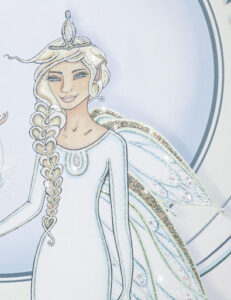
Quest for Brightland; Book One: The Blessing Ball
Quest for Brightland; Book One: The Blessing Ball is a great example of glitter!
Understand what items are included (and not included) in your quotes.
Be wary of the fine print and get clarification on inclusions and exclusions.
- Customs Charges – are all duty and customs fees are included?
- Delivery – are the sea and trucking charges to your final destination? Not all suppliers include the final destination in their quote
- Customization – does pricing include all unique features requested?
- Materials – are the materials and costs identified? Not all suppliers provide this level of detail. Watch for suppliers who include the lowest priced materials, not necessarily the most durable or appropriate.
- One Physical Sample – Most suppliers charge extra for proof samples (MCRL includes a physical proof in every quote) or don’t recommend this important final step.
What value do you place on Quality? Price? Communications? Peace of Mind?
Evaluate your quotes based on:
- How well the vendor understands your project
- How well they communicate with you (poor English can be a red flag)
Connect with vendors personally before deciding
Call or send each vendor a question related to your quote. Their responsiveness and quality of answer is a good indication of the type of customer service you are likely to receive.
Here’s what’s included in every MCRL quote.
Happy Printing!
One Pitfall to Avoid
“A pitfall to avoid in self-publishing a children’s book is assuming a children’s book takes less effort and know-how than an adult book. Take the time to really learn the craft of writing, whether you’re creating a 500-word picture book or a 75,000 word novel. If you want to be successful you’ll need to create a book of trade-publishing quality and that means putting in the time to become an expert writer.”
Laurie Miller, Manager of Events and Special Projects, Society of Children’s Book Writers and Illustrators, www.scbwi.org
The Society of Children’s Book Writers and Illustrators, a nonprofit 501(c)3 organization, is the only professional organization specifically for individuals who write, illustrate, and translate for children and young adults.
ALLi Member Experience: Authorpreneur and Children's Author Larry Feign
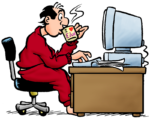 Larry Feign began his publishing career at age seven, when his writing and cartoons first appeared in his primary school magazine. Since then, his work has been featured in Time, The Economist, Fortune, and other publications around the world. He also writes children’s books under the pen name MD Whalen. He lives in a small village on an outlying island of Hong Kong with his wife, two dogs, and the occasional uninvited python. Find out more about Larry on his website, Facebook page, and the fartboys.
Larry Feign began his publishing career at age seven, when his writing and cartoons first appeared in his primary school magazine. Since then, his work has been featured in Time, The Economist, Fortune, and other publications around the world. He also writes children’s books under the pen name MD Whalen. He lives in a small village on an outlying island of Hong Kong with his wife, two dogs, and the occasional uninvited python. Find out more about Larry on his website, Facebook page, and the fartboys.

The AskALLi team asked Larry several questions about his indie author journey with children's books.
Can you explain a little about your journey with children’s books?
I was a professional cartoonist for 25 years. Early in my career I worked at a Hollywood animation studio, doing storyboards for the “Heathcliff the Cat” show. Working with a tight crew of writers, artists, and directors taught me everything you need to know about storytelling, particularly for children. I still sometimes storyboard difficult chapters or scenes instead of outlining, so I can literally see what I’m writing about.
Then fate took me elsewhere. I was a newspaper cartoonist for many years, then back into cartoon animation. But I always had an itch to write humorous children’s books. A few years ago I finally got around to it. For reasons I’ll describe below, the idea came to me for a series of books for young boys about farts. This didn’t come entirely out of the blue (or the green, the colour oddly associated with flatulence). One of my side jobs had been to produce hundreds of joke e-cards for several online media platforms. The gags based on fart jokes were always far and away the most popular. “Note to self: farts sell.”
In a burst of inspiration, I wrote three books in six weeks using dictation software: two novels about the Fart Brothers, and a throwaway volume of fun facts about farts. Side note: Dragon Dictation is quite poor at transcribing such words as Pfffblllrrrt! I revised them about 50 times and had them professionally edited, then sent them to my hotshot New York agent, who took little time to respond that these books were “unsellable”.
I dropped that agent and tried another one, who was even more blunt about my wasting his time with books that had “no chance of selling”.
All those years of cartooning gave me a thick skin. I take rejection as a challenge, like a glove slap across my cheek. I’d just have to publish them myself and show those know-nothing, out-of-touch agents. I’d been self-publishing my political cartoon collections in my home base of Hong Kong since 1991, but those were print books for a local market. I needed to get up to speed with the new world of e-books and POD. I took all the right courses and followed the instructions to a T.
I enhanced my chances of success by creating a pen name based on Kabbalistic numerology, which happens to also be the surname of a man who changed my life. As you’ll find out, it worked.
My throwaway book, The Big Book of Farty Facts, would be my reader magnet. I set up the landing pages, the BookFunnel and MailerLite accounts, yada yada yada, then pumped a little money into Facebook ads.
A hundred bucks later, not a single person had downloaded my free Farty Facts, so I turned up the juice. Long story short, around US$800 of Facebook ads netted me THREE downloads. Three! $267 per download. I’m guessing now you don’t feel so bad about your own Facebook ads.
Meanwhile, something strange was happening. The paperback of Farty Facts was selling. In fact, it was outselling the two novels, both of which were being supported by AMS ads. Clearly, people were clicking through my Facebook ads, going to my landing page, and instead of signing up for the free e-book, they went directly to Amazon to buy the paperback. Huh??? They’d rather pay eight bucks for it than get it free?
There were no books or online guidance about indie children’s publishing (this is no longer true). SPF and other courses never mentioned children’s books. They were all about Facebook-Facebook-Facebook, magnet-magnet-magnet. So why wasn’t it working for my children’s books? I thought deeply about it for a few days and came to a few conclusions:
- The reader is not the customer. Kids mostly don’t have Amazon accounts. Parents are buying the books.
- The customer is not the reader. Parents will buy but likely never read the books.
- Parents don’t buy e-books for their children. They want their kids off the screens. They want print books like they had when they were kids.
- Parents don’t want to sign up to a children’s author mailing list for themselves, nor do they want to expose their children to e-mails from a creepy guy who writes fart books.
- Parents are discerning about what they buy for their kids, so we can’t rely on impulse purchases or book gluttony like one can with many adult genres.
- I needed a new strategy.
I cancelled the Facebook ads (the sales didn’t cover the costs) and revised my AMS ads.
Skip ahead to today. Farty Facts, which I couldn’t give away for free, has sold well into six figures (of paperback copies), had three Christmas seasons in a row in Amazon’s top 100 books (of all books, not just children’s books), sold translations in eight languages, and comfortably carries the other Fart Brothers books in its wake. Two major USA publishers approached me to buy the series rights, and I turned them both down.
Not bad for some “unsellable” books.
The lesson from this is to “be water” like Bruce Lee. If something doesn’t work, think deeply about why it isn’t working, then pivot to a new strategy. This is especially true of children’s books. Of course, I was lucky. I stumbled into the right genre, which has since become crowded with imitators. It’s also important to note that I was never out to make a buck. As you’ll see below, I have sincere motives for writing these books. But more importantly, I persevered. I could never have planned it this way, which I should have known because that’s the story of my life.
Children’s books are known for being in paperback and hardback. Is there any point to e-books and if so, why?
As I discovered to my considerable expense, not only will parents not buy e-books for their children, they won’t even download them for free! Why bother with e-books, then? Here’s what I figured out…
At first I put my e-books on every platform: Amazon, Kobo, and so on. Almost nobody bought them. I decided that since they were already in existence, I’d make them exclusive to KDP and enroll them in KDP Select. That’s when I struck gold. Well, let’s say I struck sulphur, a noticeable component of farts.
I started getting page reads—some days maybe 50, other days a few hundred, sometimes a thousand. It didn’t add up to big money, but it definitely added up to more than I was earning in sales on the other platforms.
Then I began to notice a curious pattern. On those days when I got a substantial number of page reads, three days later I’d see a bump in paperback sales. This same pattern repeated itself to the point where it’s become predictable. Since paperback sales are reported upon printing and dispatch, the three day gap indicates that the spikes in page reads happen on the same day as increased paperback sales. What does it mean?
My best guess is that parents are using their Prime subscription to preview my books. Rather than rely on the limited “Look Inside” feature, they can freely download the whole book to read or skim through it to make sure it’s appropriate for little Billy Bob. Which of course it is, so they buy it. High page read days correlate with higher paperback sales.
The best part? I get paid twice! Once for the page reads, then again for the paperback sale. In other words, your e-book is the perfect promo for your print book, and what better promo than one which pays you money rather than the other way around?
Children’s books are often moralistic or have a hook or angle, how does one go about finding that?
I don’t think you need a moral purpose, a hook, or an angle for your books. What you need is a mission. And I don’t mean a mission to sell books; that kind of thinking will backfire on you, especially with children’s literature.
Your mission doesn’t have to be educational or character building. There is no shortage of children’s books with morals and uplifting messages. I’m not diminishing such books. Kids definitely enjoy having their eyes opened to other cultures, situations, and viewpoints. But not all the time. Children also love pure entertainment… just like us adults!
My mission became clear at a neighbourhood dinner party. Several young mothers complained that their sons hated reading books and half-jokingly suggested I write something for them. Instantly, a story began forming in my head about two brothers who save the world with super fart powers. Everyone knows how much nine-year-old boys love scatological humour. The next weekend I told a basic summary of the story to a couple of those boys. They were rolling over in hysterics. When one of them squealed, “I would totally read that!” his mother looked up at me with an intense stare that said, “Do it or I’ll kill you!” Thus were the Fart Brothers born.
My mission was validated by the reviews on Amazon. Countless mothers, grandmothers, and aunts (they’re almost always women) writing the same thing: “I have such a hard time getting my son/grandson/nephew to read, but these books he couldn’t put down.” Even teachers are writing that they assign my books to reluctant readers.
I’m not saying this to boast, but to make the point that my mission to reach reluctant readers was behind every word in these books. I wanted boys to have a positive association with books in general. Maybe if they find pleasure in my silly humour books, as they grow up they’ll be less afraid to pick up more worthy literature.
I’m not saying that you have to write gross humour to reach reluctant readers, or that you have to target reluctant readers at all. What you need is to find your own clear purpose for what you’re doing. That purpose might be to raise awareness about impoverished child refugees or to speculate about what the world would be like if it were run by sentient cupcakes or to help your daughter and other kids overcome their morbid fear of amusement park carousels (I knew a kid like that). In any case, if it has meaning to you, kids will sense that and likely be inspired by it.
How do you advertise children’s books when the readers aren’t on social media?
As I described with my Facebook debacle, for me at least there isn’t a single social media platform that pulls its weight, whether through active engagement or paid ads. I’ve tried group promos and again got zilch out of them. On top of that, even if you were to go straight to the kids on TikTok or wherever and hope they beg Ma and Pa to buy the books, targeting children in advertising and promotion is a legal minefield (rightfully so), one in which I am not willing to tread. Your mileage may vary; some children’s book authors I know target a single platform like Pinterest or Instagram and engage heavily—with parents—and sometimes place ads, and it works for them.
For me, Amazon ads pay off mightily, so that’s the only advertising I do. And those ads are targeted at parents.
What’s the biggest lesson you’ve learned about mindset towards publishing children’s books?
First, go in with no expectations. None. Zero. Don’t think you’re going to make money. You have to be doing this because you’re bursting with passion about a topic or character or world or the artwork and about engaging with children. Anything less than full-throttled passion is going to show, and kids can see through you better than adults. If the passion is genuine, then you stand a chance of success. In my example, the passion is for writing juvenile humour, making kids laugh, watching little boys embrace reading. And okay, sure, I’m a guy, so yes, I think farts are hilarious, so there’s that, too.
Second, treat everything as an experiment. I can’t emphasize this enough. Try each promotional tactic as a science project. If an experiment fails, a scientist doesn’t shed tears or punish herself, she analyses why that experiment didn’t work, forms a new hypothesis and strategy, and proceeds to the next experiment. There’s no emotional baggage attached. You’re just trying to figure out the universe. I’ve had numerous stunning failures on the indie publishing journey. I’ve never shed tears over any of them.
Is there anything else you’d recommend to members wanting to move into children’s book publishing?
Number 1: read no fewer than 1 gazillion books in your chosen genre per month, so you can truly get into the groove.
Number 2: Partner with a professional illustrator. Repeat: professional. No, your little cousin who got a gold star in high school art class is NOT a professional illustrator. And the woman you met at the dog park who designs anime t-shirts is not necessarily going to do a good job illustrating your dinosaur book for three-year-olds. I was a successful professional cartoonist and animator for 30 years, and even I pay other artists to illustrate my books because their styles are more appropriate for my writing.
There’s no escaping that it costs money to produce an illustrated children’s book. Amateurish or inappropriate artwork will sink your book. Great artwork will make a huge difference to your success and, more importantly, to the pride you’ll bask in when you hold that lovely creation of yours in your hands.


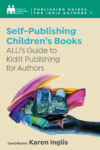



I’m a new author working on a children’s picture book series. Found this article super informative.. Thank you